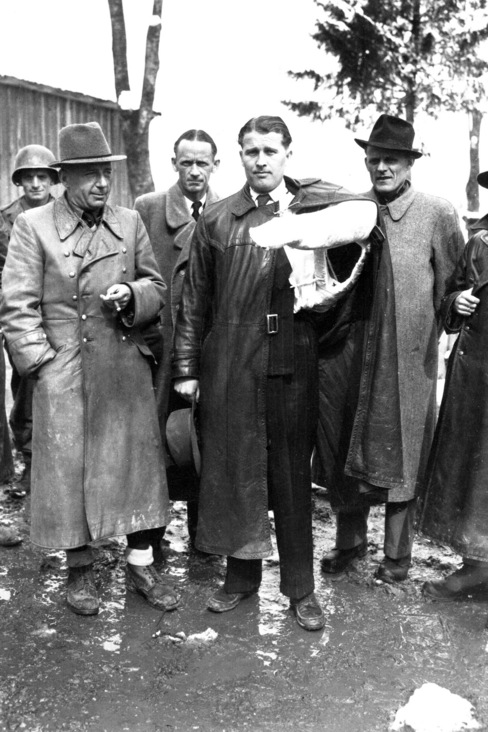 |
Some of von Braun′s colleagues from the VfR days joined him in
developing rockets for the German army. By 1935, he and his team, now 80 strong,
were regularly firing liquid-fueled engines at Kummersdorf
with great success. Following the move to Peenemünde,
von Braun found himself in charge of the A-4/V-2 project.
Less than a year after the first successful A-4 launch and following a British
bombing raid on Peenemünde, mass production of the V-2 was switched to an
underground factory in central Germany. Von Braun remained at Peenemünde to
continue testing.
In mid-March 1944, von Braun was arrested by the Gestapo and imprisoned
in Stettin. The alleged crime was that he had declared greater interest in
developing the V-2 for space travel rather than as a weapon. Also, since von
Braun was a pilot who regularly flew his government-provided airplane, it was
suggested that he was planning to escape to the Allies with V-2 secrets. Only
through the personal intervention of Munitions and Armaments Minister Albert Speer was von Braun released.
“In 1937, I was officially demanded to join the National Socialist Party. At this time I was already Technical Director at the Army
Rocket Center at Peenemünde. The technical work carried out there had, in the meantime, attracted more and more attention in higher
levels. Thus, my refusal to join the party would have meant that I would have to abandon the work of my life. Therefore, I decided
to join. My membership in the party did not involve any political activity.” Werner von Braun, 1947.
 Werner von Braun at Peenemunde |
 Werner von Braun begin 1945 |
When, by the beginning of 1945, it became obvious to von Braun that Germany was on the verge of defeat, he began planning for the postwar era. Before the Allied capture of the V-2 rocket complex, von Braun engineered the surrender to the Americans of scores of his top rocket scientists, along with plans and test vehicles. As part of a military plan called Operation Paperclip, he and his rocket team were whisked away from defeated Germany and installed at Fort Bliss, Texas. There they worked on rockets for the US Army, launching them at White Sands Proving Ground.
In 1950 von Braun's team moved to the Redstone Arsenal near Huntsville, Alabama, where they built the Army's Jupiter ballistic missile. In 1960, his rocket development center transferred from the Army to the newly established NASA and received a mandate to build the giant Saturn rockets. Von Braun was appointed director of the Marshall Space Flight Center and chief architect of the Saturn V. He also became one of the most prominent advocates of space exploration in the United States during the 1950s. In 1970, he was invited to move to Washington, D.C., to head NASA's strategic planning effort but less than two years later, feeling that the US government was no longer sufficiently committed to space exploration, he retired from the agency and joined Fairchild Industries of Germantown, Maryland.